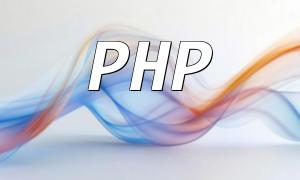In today's information age, data visualization has become one of the key indicators to measure a product or project's success. For developers, using appropriate tools and technologies to display data charts is crucial. PHP, as a powerful server-side scripting language, can easily handle and display data. This article will demonstrate how to use PHP and Chart.js together to develop a data chart display function and provide relevant code examples.
There are many open-source data chart libraries available today, such as Google Charts, Chart.js, etc. These libraries offer a wide range of chart types and customization options to meet various development needs.
In this article, we will use Chart.js as an example to demonstrate how to develop data chart display functionality using PHP. Chart.js is a lightweight JavaScript charting library that supports multiple chart types and is compatible with modern browsers.
First, we need to import the Chart.js library into the project. You can use a CDN to include it, or you can download and host it locally.
<!DOCTYPE html>
<html>
<head>
<title>Data Chart Display</title>
<script src="https://cdn.jsdelivr.net/npm/chart.js"></script>
</head>
<body>
<canvas id="myChart"></canvas>
</body>
</html>
Next, let's assume there is a database table with sales data, including fields such as sales amount and sales date. We need to fetch this data using PHP and pass it to the frontend chart for display.
<?php
// Assuming we have a database connection object $conn
$sql = "SELECT * FROM sales";
$result = $conn->query($sql);
$data = array();
if ($result->num_rows > 0) {
while ($row = $result->fetch_assoc()) {
$data[] = $row;
}
}
// Convert data to JSON format
$jsonData = json_encode($data);
?>
Next, we need to use JavaScript to pass the PHP data to Chart.js and render the chart. The following code demonstrates how to handle and display the sales data:
<script>
// Fetch the JSON data passed from PHP
var data = <?php echo $jsonData; ?>;
var labels = [];
var values = [];
// Iterate through the data to extract sales dates and amounts
data.forEach(function(item) {
labels.push(item.date);
values.push(item.amount);
});
// Create a new Chart object and render the chart
var ctx = document.getElementById('myChart').getContext('2d');
var myChart = new Chart(ctx, {
type: 'bar', // Chart type
data: {
labels: labels,
datasets: [{
label: 'Sales Amount',
data: values,
backgroundColor: 'rgba(75, 192, 192, 0.2)',
borderColor: 'rgba(75, 192, 192, 1)',
borderWidth: 1
}]
},
options: {
scales: {
y: {
beginAtZero: true
}
}
}
});
</script>
In addition to basic chart displays, you can further process the data based on your specific needs. For example, you can filter or sort the data, or add additional information to the chart.
By combining PHP with Chart.js, we can easily develop powerful and beautiful data chart display functions. Whether it's a bar chart, line chart, or pie chart, Chart.js provides great flexibility, helping us achieve effective data visualization and improve the user experience.
We hope this article has been helpful and assists you in getting started with developing data chart functionality using PHP and Chart.js.








